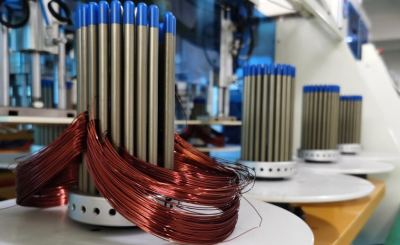Introduction
The Internet of Things (IoT) produces massive volumes of time series data, and these data must be stored, accessed, and evaluated. In addition to its speed, dependability, and scalability, Apache Cassandra is an excellent option for this job because of its internal data model’s built-in support for time-ordered data.
A network of physical objects linked to the internet is known as the Internet of Things (IoT). Many of these gadgets produce data, such as sensors. The bucket pattern can be used to store and retrieve this data effectively.
A method for defining and organizing your business processes is data modeling. Analyzing, comprehending, and outlining your data requirements and how they support your business activities enables you to develop a visual representation of your company.
5 Data Models for IoT
- Platform Business Model
Manufacturers and customers are combined in the market via the platform-based business model for mutual gain. To make income from linked transactions, interoperability and connectivity between the devices and the company are essential.
An excellent illustration of this is Amazon, which produces data through the Alexa voice recognition software and uses it to market-related products to customers. Amazon increases its revenue and market reach by charging third-party sellers and developers to produce and release services on the marketplace.
- Subscription Model
Businesses can create a recurring revenue business or subscription model using the always-on connectivity of the IoT platform. Similar to the technology-as-a-service business model, an IoT subscription model enables you to provide ongoing value to clients in exchange for a regular price.
The IoT platform lowers the barrier between you and your clients, assisting you in developing a more functional relationship than merely transactional. Over time, your gadget collects more information on customers, allowing you the chance to offer beneficial features and goods catered to their particular needs.
- Pay- per usage Model
Your IoT platform’s active sensors enable you to monitor your customers’ environments routinely to determine how frequently they utilize your product or service. This presents an opportunity for you to employ a pay-per-usage business model in which you bill customers only for the time they spend actively using your product.
Numerous auto insurance providers are embracing this business model by providing consumers with an insurance plan based on mileage. People pay for the lower rates based on the data generated by the IoT platform they have installed in their cars, not the IoT solution, which tracks their driving usage and patterns.
With their TotalCare program, Rolls-Royce has been doing this for years. Under this scheme, airlines are charged a fixed dollar amount each flying hour for using the engines on their aircraft. Through Internet of Things (IoT) sensors that provide telemetry in real-time to its monitoring sensors, Rolls-Royce actively maintains the machines while keeping ownership of them.
- Asset sharing Model
When it comes to essential equipment, many sectors incur significant expenses. They want to ensure they will utilize the technology frequently enough to justify costs. By assisting companies in reselling their excess capacity to the market, an asset-sharing business model for IoT solutions could aid in this. In this manner, each company can still use the equipment while paying a lower price. By renting out enormous assets for sharing, businesses could employ this model for their assets or as their primary company.
Consumers can compare this to scooter and automobile sharing services like Zipcar and Lime. This calls for collaboration with neighboring companies to split the cost of heavy equipment for industrial firms in the building and mining industries. IoT sensors would monitor engine data in real-time while also tracking the location and usage of the equipment to reduce breakdowns.
- Compliance Model
Many sectors depend on compliance tracking, which takes time, effort, and money. Depending on the industry, there may need to be extensive examinations for legal, environmental, or safety concerns. By improving your company’s ability to adapt to changes before they become a problem, deploying IoT devices into the field can help lower the cost of compliance.
IBM’s Vegetation Management platform combines weather, satellite, and IoT solutions to assist utilities in making better decisions. One of the leading causes of outages worldwide, caused by vegetation, has an impact on system dependability and customer satisfaction. In a sector that is so laboriously controlled, compliance is essential.
Conclusion
An actual physical object network connected to the internet is known as the Internet of Things (IoT). This data may be stored and retrieved efficiently using the bucket pattern. Businesses could use this strategy for their assets or as their primary business by renting out massive investments for sharing. Many auto insurance providers are adopting this business model by offering customers an insurance plan based on the data produced by the IoT device they have put in their cars. Due to the built-in support for time-ordered data in its internal data architecture, Apache Cassandra is a fantastic alternative.
You can also use akenza.io, a self-service IoT platform that lets you build useful Azure IoT Hub products and services. Akenza.io is confident in its ability to help organizations develop IoT solutions by considerably reducing the workload and complexity.








